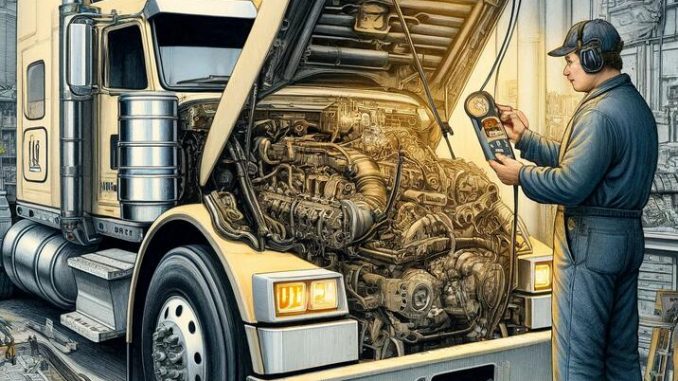
This guide specifically addresses the Caterpillar 3406E, C-10, C-12, C-15, C-16, and C-18 truck engines when there is an inability to reach top engine RPM and no diagnostic codes are present. Follow these recommended actions step by step to diagnose and resolve the issue:
Related content:
Caterpillar ET 2024A & 2023C & 2019C Electronic Technician Diagnostic Software Download and Installation
CAT Caterpillar ET 3 Diagnostic Adapter 317-7485/478-0235 Diagnostic Tool-high quality
- Check for Diagnostic Codes:
- Connect the electronic service tool to the data link connector.
- Look for any active or logged diagnostic codes. Address these codes first, as they can affect engine speed.
- Evaluate Customer Specified Parameters:
- Use the electronic service tool to access the “Configuration” screen.
- Review the settings for:
- Vehicle Speed Limit
- Lower Gears Engine RPM Limit
- Intermediate Gears Engine RPM Limit
- Gear Down Protection Engine RPM Limit
- Top Engine Limit
- VSL Protection
- PTO Top Engine Limit (with PTO switch ON)
- PTO Vehicle Speed Limit (with PTO switch ON)
- Adjust these parameters to their maximum values one at a time to see if the issue resolves.
- Assess Cold Mode Operation:
- This step is relevant if the issue occurs only after start-up in cold conditions.
- Monitor the engine status to ensure it progresses out of Cold Mode, which is typically displayed on the status screen.
- Test the Accelerator Pedal Position Sensor:
- Set the engine to idle mode using the Cruise/Idle On/Off Switch.
- Adjust RPM with the Set/Resume switches while monitoring the accelerator pedal position sensor for stability.
- Verify the Vehicle Speed Signal:
- Compare the vehicle speed reading from the electronic service tool with the actual vehicle speed to ensure accuracy.
- Inspect the Fuel Supply:
- Observe for smoke from the exhaust while cranking the engine; absence indicates possible issues with fuel quality or supply.
- Evaluate fuel quality and pressure, ensure the system is primed, check for restricted supply lines or filters, and look for air in the fuel system.
- In cold conditions, check for waxed or gelled fuel.
- Monitor the Powertrain Data Link:
- Check the Powertrain Data Link status during operation to ensure it is not restricting power.
- Examine the Air Intake and Exhaust System:
- Clean or replace clogged air filters.
- Check for any restrictions or leaks in the air intake and exhaust system.
By following these steps methodically, you can pinpoint and address issues related to engine performance even in the absence of diagnostic codes, ensuring that your Caterpillar truck engine operates efficiently and effectively.
More repair case for Caterpillar machine,please refer to:Caterpillar Machine Repair
Leave a Reply